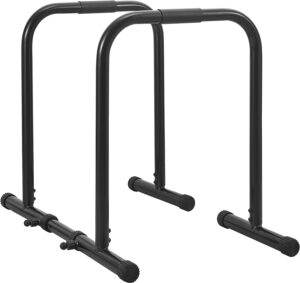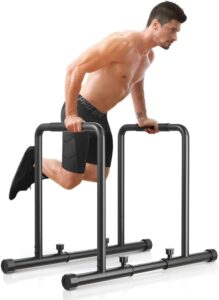Calisthenics vs. traditional weightlifting – it’s a debate that has been gaining momentum amongst fitness enthusiasts. Both methods have their loyal followers, but is calisthenics really the superior choice for strength training? While weightlifting may be synonymous with building muscle and gaining strength, calisthenics proponents argue that it offers a more holistic approach that not only strengthens the body but also improves flexibility, mobility, and body control. In this article, we will explore the benefits of calisthenics as a strength training method and delve into the reasons why it may indeed be a superior choice. So, if you’re curious about optimizing your fitness routine, keep reading to discover the world of calisthenics.
This image is property of i.shgcdn.com.
Overview
When it comes to strength training, there are a variety of options available, including calisthenics and traditional weightlifting. Both methods have their benefits and considerations, and the choice between them ultimately depends on individual preferences and goals. This article aims to provide a comprehensive overview of calisthenics and traditional weightlifting, highlighting their differences, benefits, and scientific evidence behind their effectiveness. By the end, you will have a better understanding of which approach may suit you best and how you can incorporate elements of both into your fitness routine.
Definition of Calisthenics
Calisthenics is a form of exercise that involves using one’s body weight as resistance to build strength, endurance, and flexibility. It encompasses a wide range of movements, such as push-ups, pull-ups, squats, lunges, and plank variations. Calisthenics can be performed anywhere, as it requires little to no equipment. This makes it a practical and accessible option for individuals who may not have access to a gym or prefer to exercise outdoors.

This image is property of d1aettbyeyfilo.cloudfront.net.
Definition of Traditional Weightlifting
Traditional weightlifting, on the other hand, involves using external weights, such as barbells, dumbbells, and weight machines, to perform resistance exercises. It typically focuses on specific muscle groups and allows for greater load capacity than calisthenics. Traditional weightlifting often takes place in a gym setting, where various equipment and machines are available to target specific muscles.
Benefits of Calisthenics
Minimal Equipment Required
One of the key advantages of calisthenics is its minimal equipment requirements. All you really need is your own body weight, making it a cost-effective option for those on a budget or who prefer to exercise without relying on specialized equipment. The lack of equipment also means that calisthenics can be done in the comfort of your own home, in a park, or even on vacation. This accessibility makes it convenient for anyone, regardless of their location or schedule.
Convenience and Accessibility
The convenience factor of calisthenics cannot be overstated. Since it requires minimal equipment, you can essentially perform your workouts anywhere, at any time. There is no need to commute to a gym or wait for your turn to use equipment. This convenience factor can ensure that you are more likely to stick to your exercise routine consistently, which is essential for making progress in strength training.
Full Body Workout
Calisthenics exercises often involve multiple muscle groups, providing a full body workout in a single session. Movements like push-ups and pull-ups engage not only the targeted muscles, but also require core stabilization and engage supporting muscles. This comprehensive activation of multiple muscle groups can lead to overall strength gains and improved functional fitness.
Improved Mobility and Flexibility
Many calisthenics exercises require a full range of motion, which can lead to improved mobility and flexibility over time. Movements like deep squats and bridges work the muscles through a complete range of motion, helping to increase flexibility and joint mobility. This is particularly beneficial for individuals who may have tight muscles or limited mobility.
Functional Strength
Calisthenics focuses on building functional strength, which is the ability to perform everyday movements more efficiently and effectively. The movements involved in calisthenics mimic real-life activities, such as pushing, pulling, bending, and squatting. By training your muscles to work together in a functional manner, you can enhance your performance in activities like lifting heavy objects, climbing stairs, or participating in sports.
Progression and Variation
Calisthenics offers a wide range of progression and variation options, allowing individuals to continually challenge and improve themselves. As you become stronger and more proficient in basic movements, you can progress to more advanced variations or increase the intensity by modifying leverage or adding resistance bands. This versatility ensures that your workouts remain engaging and challenging, preventing plateaus in performance.

This image is property of cdn.pullup-dip.com.
Benefits of Traditional Weightlifting
Targeted Muscle Development
Traditional weightlifting allows for more targeted muscle development. By utilizing external weights and machines, specific muscle groups can be isolated and worked to enhance their size, strength, and definition. This level of specificity can be beneficial for individuals looking to target specific areas for aesthetic or performance reasons.
Increased Load Capacity
One of the major advantages of traditional weightlifting is the ability to handle progressively heavier loads. This increased load capacity allows for greater muscle stimulation and potential muscle hypertrophy (growth). With the use of barbells, dumbbells, and weight machines, you can progressively increase the weight you lift over time, leading to significant strength gains.
Muscle Isolation
Traditional weightlifting also offers the advantage of isolating specific muscles, which can be beneficial for addressing muscle imbalances and weaknesses. By targeting specific muscle groups with exercises like bicep curls or leg extensions, you can strengthen those areas individually and work towards achieving more balanced muscle development.
Progress Tracking
Tracking progress is easier with traditional weightlifting due to the ability to easily measure and quantify the weights lifted. This makes it simpler to set goals, track improvements, and establish clear indicators of progress. Whether it is an increase in the amount of weight lifted or the number of repetitions performed, tracking progress can help maintain motivation and clearly see the results of your efforts.
Mental Focus and Discipline
Traditional weightlifting often requires a higher degree of mental focus and discipline. When lifting heavy weights, maintaining proper form, and executing precise movements becomes crucial. This level of concentration can be beneficial to improve mental focus and discipline, which can extend beyond the gym and positively impact other areas of life.
Comparison of Calisthenics and Traditional Weightlifting
Muscle Mass and Strength Gain
While both calisthenics and traditional weightlifting can lead to muscle growth and strength gain, the methods differ in their potential for muscular hypertrophy. Traditional weightlifting allows for greater load capacity and targeted muscle isolation, making it more suitable for individuals aiming to maximize muscle mass. Calisthenics, on the other hand, focuses on utilizing body weight and engaging multiple muscle groups simultaneously, leading to overall strength gains and improved functional fitness.
Safety and Injury Risk
Safety is an important consideration when it comes to strength training. In calisthenics, the risk of injury is generally lower due to its reliance on body weight and natural movements. However, poor form or attempting advanced movements without proper progression can still lead to injuries. Traditional weightlifting, especially when using heavy weights and complex movements, carries a higher risk of injuries if proper form and technique are not followed. It is essential to prioritize safety, irrespective of the chosen method.
Time Efficiency
Time efficiency is often a crucial factor for individuals with busy schedules. Calisthenics tends to be more time-efficient compared to traditional weightlifting since it does not require travel to a gym or setting up heavy equipment. With calisthenics, you can perform workouts at home or outside, allowing for efficient use of time. Traditional weightlifting, on the other hand, may require more time due to the need to commute to a gym and potentially wait for equipment.
Cost
Cost can be a significant consideration when deciding between calisthenics and traditional weightlifting. Calisthenics requires minimal equipment, making it a more cost-effective option. You can start with just a small investment in resistance bands or a pull-up bar, if desired. Traditional weightlifting, on the other hand, often requires access to a gym, which may involve membership fees or the cost of purchasing weights and equipment for home use.
Overall Fitness and Athletic Performance
When it comes to overall fitness and athletic performance, both calisthenics and traditional weightlifting have their merits. Calisthenics emphasizes functional strength, mobility, and flexibility, which can improve performance in various physical activities. Traditional weightlifting, with its focus on muscle isolation and load capacity, can enhance strength and power, which may be beneficial for athletes participating in sports that require explosive movements or specific muscle development.

This image is property of betterme.world.
Scientific Studies and Research
Effectiveness of Calisthenics
Several studies have demonstrated the effectiveness of calisthenics for strength and fitness improvements. A study published in the Journal of Strength and Conditioning Research found that a 12-week calisthenics program significantly increased muscle size and strength in participants. Another study published in the Journal of Sports Science and Medicine concluded that calisthenics can improve muscular endurance, power, and explosive strength. These findings support the notion that calisthenics can be an effective method for strength training.
Effectiveness of Traditional Weightlifting
Traditional weightlifting is backed by numerous studies and research highlighting its effectiveness for muscle growth and strength gains. A study published in the Journal of Applied Physiology found that weightlifting led to significant improvements in muscle size, strength, and power. Another study published in the Scandinavian Journal of Medicine & Science in Sports concluded that traditional weightlifting resulted in greater muscle hypertrophy compared to calisthenics. These studies emphasize the efficacy of traditional weightlifting for targeted muscle development.
Personal Factors to Consider
Fitness Goals
The choice between calisthenics and traditional weightlifting should align with your fitness goals. If you are primarily focused on building muscle mass or targeting specific areas, traditional weightlifting may be more suitable. Alternatively, if you aim for overall strength, functional fitness, and improved mobility, calisthenics can be a valuable option.
Individual Preferences
Individual preferences also play a significant role in choosing between calisthenics and traditional weightlifting. Consider factors such as accessibility, convenience, preferred training environment, and personal enjoyment. It is important to engage in an exercise routine that you feel motivated and excited about to ensure long-term adherence.
Health and Physical Limitations
Personal health and physical limitations should always be taken into account. If you have any pre-existing injuries, joint issues, or movement restrictions, calisthenics may offer a safer and more suitable option. However, it is essential to consult with a healthcare professional or qualified trainer to ensure exercises are appropriate and modified as needed.
This image is property of qph.cf2.quoracdn.net.
Combining Calisthenics and Traditional Weightlifting
Benefits of Combined Training
Combining elements of calisthenics and traditional weightlifting in a training program can offer numerous benefits. By incorporating both methods, you can enjoy the advantages of calisthenics’ accessibility, full-body engagement, and functional strength development, as well as traditional weightlifting’s targeted muscle development and load capacity. This combination ensures a well-rounded approach to strength training and provides opportunities for progression and variation.
How to Incorporate Both Methods
To incorporate calisthenics and traditional weightlifting effectively, you can divide your training sessions into specific days or periods dedicated to each method. For example, you can perform traditional weightlifting exercises on certain days, focusing on specific muscle groups, and reserve other days for calisthenics workouts that engage the entire body. Alternatively, you can integrate both methods within the same workout, alternating between calisthenics movements and weightlifting exercises to provide a comprehensive and balanced training session.
Conclusion
Calisthenics and traditional weightlifting are two distinct approaches to strength training, each with its own benefits and considerations. Calisthenics offers convenience, accessibility, full-body engagement, and functional strength development, while traditional weightlifting provides targeted muscle development, increased load capacity, progress tracking, and mental focus. The choice between the two ultimately depends on individual preferences, fitness goals, and personal circumstances. As with any form of exercise, it is important to prioritize safety, listen to your body, and consult with professionals when needed. Remember, regardless of the method chosen, consistency, effort, and proper technique are the keys to achieving your fitness goals.





